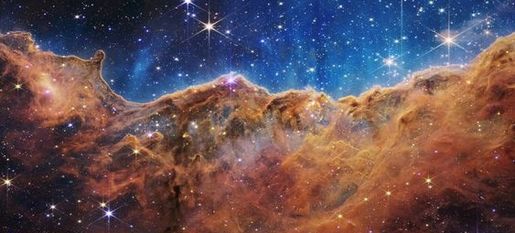About stardust

Our aim
At stardust ,we aim to create a vibrant community centered around the wonders of space. Our mission is to connect enthusiasts, share knowledge, and inspire curiosity through engaging content, discussions, and events that celebrate the beauty and mystery of the universe. Join us on this cosmic journey!
Our Team

Aarna Jha
Aarna Jha
Aarna Jha
Web Developer and Content Strategists

Avani Jha
Aarna Jha
Aarna Jha
Content strategist and Social Media Manager

Komya Rao
Aarna Jha
Rebecca Abagail Ryder
Content Strategist and Social Media Manager

Rebecca Abagail Ryder
Rebecca Abagail Ryder
Rebecca Abagail Ryder
Content Strategists

Trisha Panda
Rebecca Abagail Ryder
Trisha Panda
Web Developer and Content Strategists
stardust.com's Visual Journey: Browse Our Photo Gallery
01/15
Constellations: The stories of stars - Trisha Panda
The Allure of Constellations
Constellations are patterns of stars that have fascinated humans for centuries. Ancient civilizations, including the Greeks and Egyptians, mapped the night sky, assigning stories and meanings to these celestial formations. Today, there are 88 officially recognized constellations, each holding unique cultural significance and lore
Popular constellations include Orion, known for its prominent Belt; Ursa Major, home to the Big Dipper; and Cassiopeia, easily recognizable in the northern sky. Scorpius, resembling a scorpion, and Leo, representing a lion, are also notable. These patterns not only captivate our imagination but have also guided navigation throughout history.
Stargazing allows us to connect with the universe and appreciate its beauty. To explore constellations, seek dark locations, use star maps or apps, and be patient as your eyes adjust to the night sky
Celestial Ventures - Avani Jha
Apollo 11
- First manned mission to land on the Moon
- Crew: Neil Armstrong, Buzz Aldrin, Michael Collins
- Achievements: Armstrong became the first person to set foot on the Moon's surface
Voyager 1 and 2
- Twin spacecraft launched to study outer Solar System and bey
- Achievements: Most distant human-made objects, entered interstellar space, sent back valuable data on Jupiter, Saturn, Uranus, and Neptun
International space station
- A collaborative project between space agencies worldwide
- Achievements: Continuous human presence in space, conducts scientific research, tests spaceflight technologies
Mars Curiosity Rover
- NASA's robotic mission to explore Mars' surface
- Achievements: Discovered evidence of ancient lakes, rivers, and habitable environments on Mars, continues to explore Gale Crater
New Horizon
- NASA's mission to study Pluto and the Kuiper Belt
- Achievements: First close-up images of Pluto, revealed a diverse and complex geology, explored the Kuiper Belt, a region of icy bodies beyond Neptune
Galaxies: Avani Jha

An Introduction to the Mystique of Galaxies
Galaxies are massive, gravitationally bound systems consisting of:
- Stars
- Interstellar medium
- Dark matter
- Dark energy
Galaxies come in different shapes and sizes:
- Spiral galaxies
- Elliptical galaxies
- Irregular galaxies
- Dwarf galaxies

The Cosmic Tapestry of Our Universe
Galaxies serve as the universe's building blocks, housing billions of stars, planets, and other celestial phenomena. These vast systems are separated by immense distances, yet they remain interconnected through gravitational forces and the shared history of cosmic evolution. Each galaxy tells a unique story, contributing to the rich tapestry of the universe and our understanding of its origins.

Unveiling the Enigmas of the Cosmos
Galaxy Mysteries:
- Dark matter and dark energy: unknown nature and properties
- Fast Radio Bursts (FRBs): brief, intense pulses from distant galaxies
- Gamma-Ray Bursts (GRBs): extremely powerful explosions
The Art of Cosmology: Trisha Panda
The Essence of Cosmology
Cosmology is the scientific study of the universe's origin, evolution, and ultimate fate. It seeks to understand the large-scale structures and phenomena that shape our cosmos, such as galaxies, stars, and cosmic microwave background radiation. Through advanced observational tools and theoretical frameworks, cosmologists explore the fundamental laws governing the universe.
Unraveling Mysteries
Cosmologists delve into profound mysteries, including dark matter and dark energy, which together make up most of the universe's content. By studying the expansion of the universe and cosmic inflation, they strive to explain how these elusive components influence cosmic evolution. Each discovery reveals deeper questions about the nature of reality.
The Quest for Knowledge
As our understanding of cosmology expands, it sparks curiosity and inspires future generations of scientists. This field not only enhances our knowledge of the universe but also connects us to the broader questions of existence and our place within the cosmos. Ultimately, cosmology invites us to explore the wonders beyond our world.
The Mystery of Exoplanets: Komya Rao
Diverse Worlds of Exoplanets
Exoplanets are planets orbiting stars beyond our solar system. These distant worlds vary greatly in size and type, ranging from rocky, Earth-like planets to massive gas giants. They orbit diverse stars, from small red dwarfs to giant blue stars, expanding our understanding of planetary systems and the possibility of life beyond Earth.
Notable Exoplanets: Kepler-452b and WASP-76b
Some Popular exoplanets are Kepler-452b, often called as "Earth's cousin," resides in its star's habitable zone, sparking speculation about potential habitability. On the other hand, WASP-76b is a truly extreme planet, raining molten iron. They highlight the vast array of planetary conditions and the exciting possibilities for future discoveries in the field of exoplanetary science.
The Importance of Studying Exoplanets
Exoplanets are crucial for unravelling the mysteries of the universe. They are vital for understanding planet formation, the potential for life beyond Earth, and our solar system's place in the universe. Studying these distant worlds helps us appreciate Earth's unique conditions and the possibility of extraterrestrial life.
Astrometry: Rebecca A R

The Art and Science of Astrometry
Astrometry involves measuring the precise positions and movements of celestial bodies. This branch of astronomy helps in mapping the stars and planets, providing crucial data on their distances, velocities, and trajectories. Astrometric data is essential for understanding the structure of our galaxy and the motion of objects within it.

Astrometry and Exoplanet Discovery
Astrometry also aids in discovering exoplanets by detecting slight wobbles in stars caused by orbiting planets. This technique, known as the astrometric method, has been instrumental in identifying new worlds beyond our solar system. The accurate measurement of stellar positions also supports spacecraft navigation and the study of stellar parallax. achieve their goals.

The Gaia Mission: A New Era in Astrometry
The European Space Agency's Gaia mission is a landmark project in astrometry. It aims to create a three-dimensional map of our galaxy with unprecedented accuracy. By observing over a billion stars, Gaia provides data that revolutionizes our understanding of the Milky Way's composition, formation, and evolution. and stay ahead of the competition.
The celestial guiding lights-Stars-Rebecca A R
Luminous Celestial Objects
Stars are luminous celestial objects composed mainly of hydrogen and helium. They generate energy through nuclear fusion in their cores, producing light and heat. The color of a star indicates its temperature, with blue stars being the hottest and red stars the coolest. Stars vary greatly in size and mass.
The Life Cycle of a Star
The life cycle of a star begins in a nebula, a cloud of gas and dust. Gravitational forces cause the nebula to collapse, forming a protostar. Over time, this protostar ignites nuclear fusion, becoming a main-sequence star. Depending on its mass, a star may end its life as a white dwarf, neutron star, or black hole.
Stellar Classification Systems
Stars are classified into different spectral types based on their temperature and spectral characteristics. The most common classification system is the Morgan-Keenan (MK) system, which ranges from O-type stars to M-type stars. This classification helps astronomers study and understand stellar properties and behaviors.
Astrobiology: The Science of Life Beyond Earth-Aarna Jha

The Science of Life Beyond Earth
Astrobiology is the scientific exploration of life in the universe. It seeks to understand the origin, evolution, distribution, and future of life, both on Earth and beyond. This interdisciplinary field combines biology, astronomy, chemistry, geology, and other sciences to investigate the possibility of extraterrestrial life.

Understanding our blue planet
Astrobiologists study Earth's extreme environments to understand the limits of life and search for similar conditions on other planets and moons. They also analyze meteorites and comets for signs of organic molecules, building blocks of life. By exploring the cosmos, we hope to discover if we are alone in the universe or if life is a common phenomenon.

The quest for extraterrestial life
The search for extraterrestrial life has profound implications for understanding our place in the cosmos. Discovering life beyond Earth would revolutionize our view of biology and the universe. It could also inspire future generations to explore and protect our planet, recognizing Earth as a unique oasis in the vast expanse of space.
Challenges faced in space exploration - Aarna Jha
Signal delays
Signal delays can hinder real-time control, and journeys can take years. Additionally, the harsh space environment poses risks. Astronauts face dangers like radiation, micrometeoroids, and the psychological toll of isolation. Developing life support systems capable of sustaining humans for extended periods in such conditions is a formidable engineering challenge.
Effects of microgravity
Overcoming the effects of microgravity is another hurdle. The human body is designed for Earth's gravity, and prolonged exposure to weightlessness weakens bones and muscles. Astronauts must undergo rigorous exercise regimes to mitigate these effects. Furthermore, the psychological impact of isolation and confinement in a small space for months or even years is significant. Developing strategies to maintain mental health is crucial for long-duration missions.
The allure of discovery
Despite these challenges, the allure of discovery and the potential benefits for humanity drive space exploration forward. By overcoming these obstacles, we can expand our universe's knowledge, develop new technologies, and potentially find solutions to Earth's problems.
Meteor Showers : Komya Rao
Celestial Spectacle: What is a Meteor Shower?
A meteor shower is a celestial event where numerous meteors, known as shooting stars, radiate from a single point in the night sky. These meteors are small debris, such as dust and rock, from comets or asteroids. As Earth passes through this debris field, the particles enter the atmosphere at high speeds, burning up and creating visible streaks of light.
Dance of Debris: How Meteor Showers Occur
Meteor showers typically originate from comets. As comets orbit the Sun, they shed ice, dust, and rock, leaving a trail of debris. When Earth intersects this trail, the particles burn up in the atmosphere, appearing to originate from a radiant point named after the constellation it is found in, like the Perseids from Perseus.
Wonders of the Night Sky: Famous Meteor Showers and Scientific Importance
Notable meteor showers include the Perseids in August, Geminids in December, and Leonids in November. Studying meteor showers helps scientists understand comets, asteroids, and the solar system's formation. These events also pose risks to spacecraft, making prediction and tracking crucial. Meteor showers have fascinated humans for centuries, inspiring myths, legends, and artistic works. the highest level of service and support.
Want to see the latest meteor shower?
Surprise! Follow us on Pinterest for free space-themed wallpapers and lock screens!
Contact Us
Better yet, join our lovely astro dreamers community
stardust.com
Noida, Uttar Pradesh, India
Hours
Today | Closed |
Subscribe
Sign up to hear from us about specials, sales, and events.
We want to hear from you!
Click the button below to submit our feedback form
Copyright © 2024 stardust.com - All Rights Reserved.
Powered by GoDaddy
This website uses cookies.
We use cookies to analyze website traffic and optimize your website experience. By accepting our use of cookies, your data will be aggregated with all other user data.
